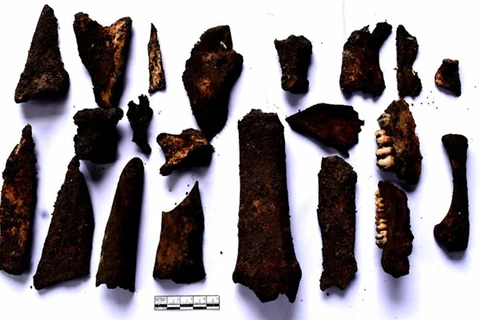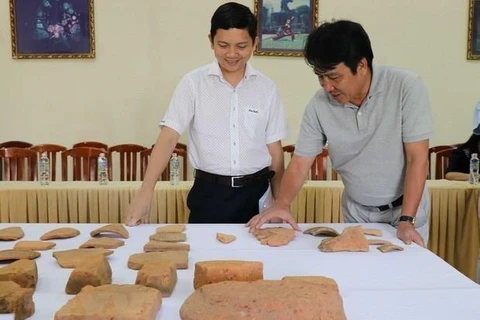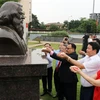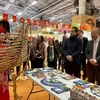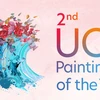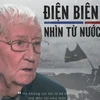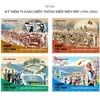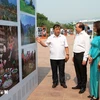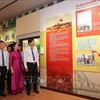 Stone tools discovered at the Lung Leng archaeological site on display at the Vietnam National Museum of History. (Source: the Vietnam National Museum of History)
Stone tools discovered at the Lung Leng archaeological site on display at the Vietnam National Museum of History. (Source: the Vietnam National Museum of History) Hanoi (VNA) - The discovery of the Lung Leng archaeological site in late 1999 stirred the domestic scientific community.
It is located on the right bank of Po Ko River in Sa Binh commune, Sa Thay district, the Central Highlands province of Kon Tum, about 15km west of Kon Tum town.
The site covers an area of about 15,000 sq.m and is at the elevation of 503-509 metres in the flooded area of the Yaly hydroelectric reservoir.
The first excavation conducted in September 1999 took place on an area of 106 sq.m and found hundreds of stone artefacts, as well as tens of thousands of various ceramic pieces, showing the latent richness of this important archaeological site. The full excavation of the site was conducted in the second half of 2001.
This is one of the largest archaeological excavations in Vietnam.
The Lung Leng site has provided a rich system of relics and artefacts, proving early humans’ presence in the region for tens of millennia, and re-tracing the steps of a prehistoric society in the Central Highlands.
Through excavations, Lung Leng is found to be an archaeological site with intact civilisation layers, reflecting the basic developmental stages from the Paleolithic Age to the Neolithic Age, through the Metal Age, and even into the Medieval Age.
Lung Leng is not only a relic site on a residential area and a stone processing and pottery making workshop but also acts as a burial site.
Traces of inhabitants of the post-Paleolithic period were found in the layer of laterite soil at a depth of 1.2-1.4m. They produced and used large rudimentary tools made of quartzite pebbles or basalt stone. These were spearhead tools, cutting tools, grapefruit-shaped peeling tools, and so on.
Artefacts also showed that former inhabitants lived in a hot and humid climate in the late Pleistocene period over ten thousand years ago. Their economic activities were mainly hunting and gathering, and they had not come to know agriculture, sharpening tools or making pottery.
There is the civilisation vestige of the post-Neolithic - early Metal period in another soil layer. This corresponds to the Holocene dating from 2000 to 4000 years ago. It’s a concentrated place, with a high density of various types of relics, such as stone axes, grinding stones, terracotta, ash, jars, and tombs.
It can, therefore, be said that humans in this period settled outdoors in the model of villages, subsisting on farming, hunting, gathering, fishing, pottery making and non-ferrous metallurgy.
Specifically, there are vestiges of fire stoves, blast furnaces, tombs, human remains and rice husk traces found at the Lung Leng site. Rice cultivation appeared very early in the Central Highlands region.
Up to 18 blast furnaces were also unearthed with vestiges of iron slag, iron ore and bronze axe moulds dating back to the 1st century BC.
Jar burials containing remains were found on the relic site. Most of the jars were decorated with engravings and designs resembling wolf teeth.
Artefacts collected at Lung Leng were stone, pottery and metal items, which included over 23,000 specimens of stoneware, about 1 million items of pottery, and a small number of iron products.
Through vestiges and artefacts, the Lung Leng site is considered as an especially important archaeological relic. It is a rich source of historical material, contributing to the study of the nation’s history and culture./.

